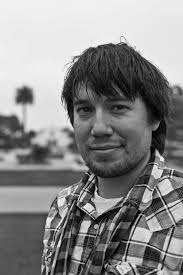John Hersey’s novel Hiroshima discusses the atrocious act of the dropping of the first atomic bomb. Through his story, he follows the stories of six different characters. Each character counted themselves lucky to be alive that fateful day and Hersey told their stories.
Hersey was an American writer and journalist who was born in China. Upon return to the United States, Hersey began attending school in Briarcliff Manor, Yale, and the University of Cambridge.
During World War II, Hersey worked as a journalist and covered fighting in Europe and Asia, as well as the Allied troops in Sicily. After the war, Hersey was in Japan reporting on their reconstruction. During this time, he was introduced to the people who would later become his award-winning characters.
Hersey fathered what would later be termed as “New Journalism.” He worked to take non-fiction stories and weave them into fictitious-sounding works of writing, exactly like Hiroshima.
I believe that Hersey wrote this piece in order to tell the truth of the devastation in Japan after seeing the destruction of the atomic bomb. His writing was new; he took the story and created it into an article that could be read as a story. He wrote to bring awareness to the realities of what the United States had done.
Hersey worked to piece together a masterpiece of survival with one of fear and pain. He wrote through scenarios in a tone similar to Ernest Hemingway: clear, concise, and clean.
Hersey wrote this story through copious retellings and interviews. He met his first victim, Father Wilhelm Kleinsorge –a Jesuit priest– who then introduced him to the remaining five victims. Precise recollections were necessary for Hersey to construct his graphic, realistic scenes.
One of the many times in Hersey’s book where this is shown in full happens within the beginning of the story. Miss Toshiko Sasaki describes the pain and fear she felt after the explosion.
Within this passage, Hersey tells of her coming in and out of consciousness and in and out of pain. In order for this to be effective, Hersey would have needed to ask the right questions of Miss Sasaki, beyond that of “What do you remember?”
He paints a picture of bookshelves falling into each other and books themselves littering the floors. The sound of footsteps atop their heads and the clawing through to be freed. In this section, it seems as if Hersey could have been there, but he wasn’t.
His interview tactics got to the meat of the story. He described scenes as the survivors, though he only knew everything secondhand.
Personally, I was intrigued by the story. It takes dedication and careful decisions to write a story from the perspective of a person that is still alive. Hersey did this in an incredible fashion.
This book was set-up so it was told from the perspectives of six individuals. Each story was told through their eyes. It was interesting to see so many emotions evoked, even though there was a single author.
I love history and its implications, and John Hersey made me see it from a different light. The atomic bomb not only won the war, but it destroyed people.


Comments